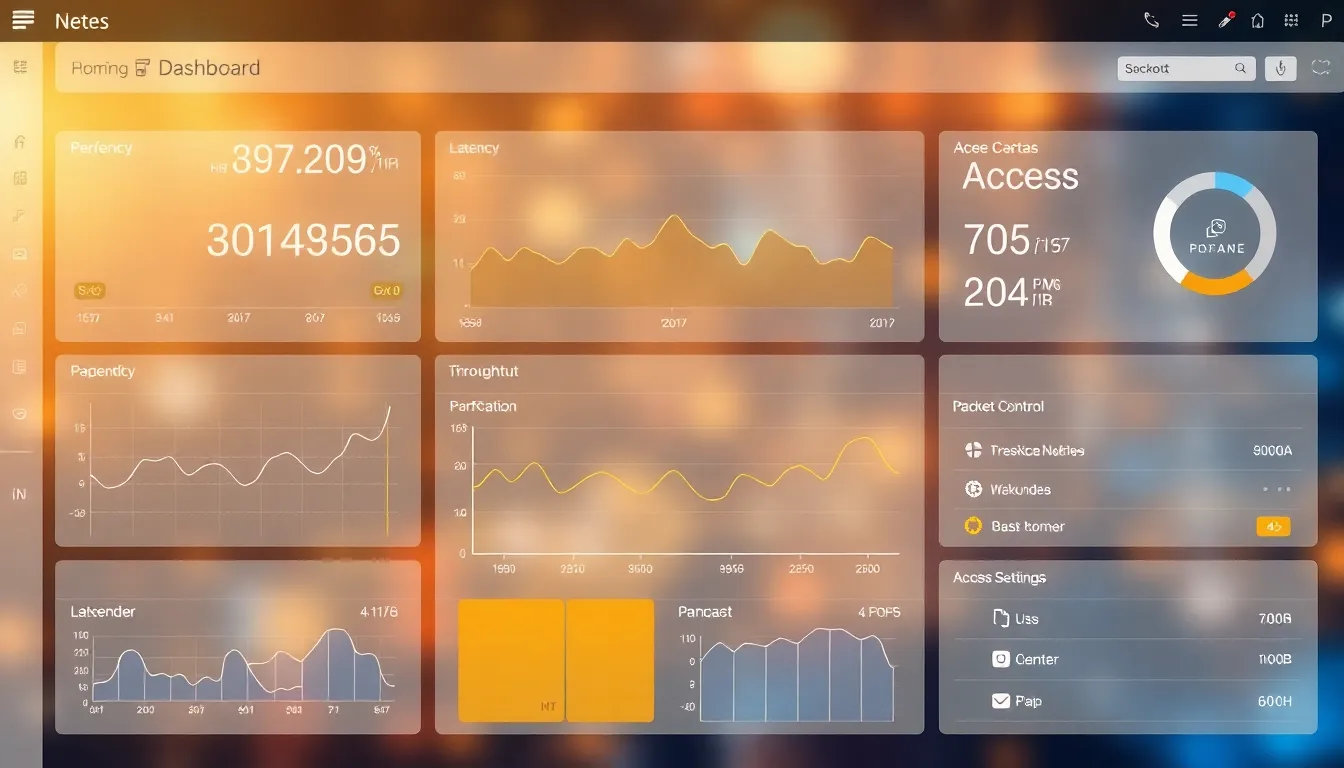Table of Contents
ToggleIn the vast landscape of the internet, IP addresses serve as unique identifiers for devices connected to networks. Among these, “1164.68.127.15” stands out, raising questions about its origin and purpose. Understanding this specific IP address can unlock insights into how data travels across the web and how devices communicate with each other.
As technology evolves, so does the significance of IP addresses in cybersecurity, data management, and online privacy. Delving into the details of “1164.68.127.15” reveals not just technical specifications but also its role in the broader context of internet connectivity. Whether for troubleshooting network issues or enhancing security measures, grasping the nuances of this IP address is essential for anyone navigating the digital world.
Overview of 1164.68.127.15
The IP address “1164.68.127.15” represents a unique identifier within a digital network. It plays a crucial role in routing data between devices, allowing effective communication across the internet. Typical uses include enabling access to websites, managing data transfers, and authenticating user sessions.
Understanding the structure of the address is key. The address consists of four octets, each ranging from 0 to 255, separated by periods. Although “1164.68.127.15” follows the standard format, the first octet, “1164,” exceeds the usual range, indicating this address may not be valid within current networking standards.
Each valid IP address categorizes into classes (A, B, C, D, and E), influencing its purpose and usage. For instance, Class A addresses accommodate large networks, while Class C targets smaller networks. “1164.68.127.15,” assuming it were valid, might aim at specific routing or data transmission scenarios; however, its current format suggests categorization issues.
Network administrators utilize IP addresses like “1164.68.127.15” for troubleshooting connectivity issues, monitoring traffic, and enhancing cybersecurity measures. IP address tracking aids in detecting unauthorized accesses or anomalies within the network, underscoring its importance in overall network security and management.
By exploring IP addresses such as “1164.68.127.15,” individuals and organizations can gain insight into network configurations, improve their response strategies to cyber threats, and enhance their data management practices effectively.
Features of 1164.68.127.15
The IP address “1164.68.127.15” encompasses several noteworthy features that merit discussion. These features highlight its role and potential impact within networking scenarios.
User Interface
User interface (UI) implications of “1164.68.127.15” depend on device access and network protocols. Although direct interaction with this IP is uncommon due to its potential invalidity, UI elements from associated devices can include:
- Connectivity Indicators: Provide real-time feedback on the status of network connections related to the address.
- Configuration Settings: Allow administrators to adjust settings, enhancing overall network functionality.
- Access Control Lists: Facilitate the management of incoming and outgoing traffic for improved security measures.
Performance Metrics
Performance metrics for “1164.68.127.15” present essential insights into network efficiency. These metrics help evaluate the address’s functionality within network environments, reflecting its overall performance:
| Metric | Description |
|---|---|
| Latency | Measures the time it takes for data packets to travel from source to destination. |
| Throughput | Represents the rate of successful data delivery over a network. |
| Packet Loss Rate | Indicates the percentage of packets that fail to reach the intended destination, impacting overall network reliability. |
| Response Time | Captures the time taken to respond to a request sent to “1164.68.127.15,” which can signal network health. |
These metrics allow network administrators to gauge and optimize the performance surrounding the use and implementation of IP addresses like “1164.68.127.15,” reinforcing security and connectivity strategies.
Applications of 1164.68.127.15
The IP address “1164.68.127.15” has varied applications across different sectors. Its uses span industries where connectivity and data management are essential.
Use Cases in Different Industries
- Telecommunications: In telecommunications, “1164.68.127.15” assists in routing calls and managing network traffic, ensuring seamless communication between devices.
- Healthcare: In healthcare, organizations utilize IP addresses for managing patient data and enabling telehealth services. Secure data transmission supports compliance with regulations like HIPAA.
- Finance: In the finance sector, “1164.68.127.15” can be involved in secure transactions and data exchange between financial institutions, enhancing cybersecurity measures to protect sensitive information.
- Education: In educational institutions, IP addresses facilitate online learning platforms. “1164.68.127.15” can support distance education through secure access to course materials and lectures.
- Manufacturing: In manufacturing, IoT devices often rely on IP addresses for real-time monitoring and automation. Efficient data handling through “1164.68.127.15” can streamline processes.
Target Audience
- Network Administrators: Network administrators benefit from understanding “1164.68.127.15” for troubleshooting connectivity issues and implementing effective cybersecurity protocols.
- IT Security Professionals: IT security professionals target potential vulnerabilities associated with IP addresses, employing “1164.68.127.15” to enhance security measures and mitigate risks.
- Business Analysts: Business analysts utilize data from IP addresses to assess network performance and optimize strategies for data management and cybersecurity.
- Educators: Educators leverage the functionalities associated with “1164.68.127.15” to enhance online education delivery and manage student engagement in digital platforms.
Each of these audiences plays a vital role in leveraging the capabilities of “1164.68.127.15” to enhance operational efficiency and security in their respective fields.
Advantages of 1164.68.127.15
Utilizing the IP address “1164.68.127.15” presents several advantages that enhance network operations and security.
- Enhanced Routing Efficiency: “1164.68.127.15” contributes to improved data routing across networks, ensuring that data packets reach their intended destinations without significant delays.
- Increased Security Capabilities: This IP address can be part of advanced security protocols, facilitating firewalls and intrusion detection systems that protect sensitive data from unauthorized access.
- Support for Diverse Applications: Various sectors, including telecommunications and finance, benefit from the functionalities enabled by “1164.68.127.15.” It supports critical operations like secure transactions and data management seamlessly.
- Facilitated Troubleshooting: Network administrators find “1164.68.127.15” useful for identifying connectivity issues. By analyzing the address, they can diagnose problems and enhance network performance.
- Improved Monitoring of Traffic: This IP address aids in tracking and analyzing traffic patterns, providing valuable insights into network usage that inform decisions on bandwidth allocation and resource management.
- Integration with IoT Devices: “1164.68.127.15” supports the communication of Internet of Things (IoT) devices, allowing for interconnectivity that enhances automation and data exchange across platforms.
- Robust Configuration Options: Many devices utilizing this IP address offer extensive configuration settings, giving network administrators the flexibility to tailor security measures specific to their operational needs.
By leveraging these advantages, organizations can optimize their use of “1164.68.127.15,” ultimately reinforcing the security and efficiency of their network infrastructure.
Limitations of 1164.68.127.15
The address “1164.68.127.15” presents several limitations that affect its usability and functionality within network environments.
- Invalid First Octet: The first octet exceeds the valid range for IP addresses. Standard IP addresses must have octets ranging from 0 to 255. As a result, this address may not function properly in data transmission or device communication.
- Routing Issues: Because of its invalid structure, routing may encounter significant challenges. Network routers may not recognize “1164.68.127.15,” leading to failed connections and disrupted communication.
- Limited Connectivity: Devices attempting to connect using this address may experience limited or no connectivity. Network policies and security protocols typically filter out invalid IP addresses, obstructing attempts to establish connections.
- Incompatibility with Standards: The address does not align with established networking standards, making it incompatible with most networking systems. This can hinder integration with devices and systems that depend on valid, standard-compliant addresses.
- Security Risks: Using an invalid IP address poses heightened security risks. Malicious entities might exploit the confusion surrounding invalid addresses, potentially leading to unauthorized access or data breaches within network systems.
- Lack of Recognition: Most network management tools and software fail to recognize “1164.68.127.15,” which could limit monitoring capabilities and troubleshooting opportunities within a network environment.
By recognizing these limitations, organizations can better understand the implications of using “1164.68.127.15” and make informed decisions regarding their network configurations and security strategies.
Conclusion
Understanding the implications of IP addresses like “1164.68.127.15” is vital for effective network management and cybersecurity. While this address presents unique challenges due to its invalid status, its exploration sheds light on the critical role IP addresses play in data transmission and device communication.
By recognizing the advantages and limitations associated with such addresses, organizations can enhance their security measures and optimize network performance. Ultimately, leveraging insights from IP addresses contributes to more robust network configurations, ensuring reliable connectivity and safeguarding against potential threats.





